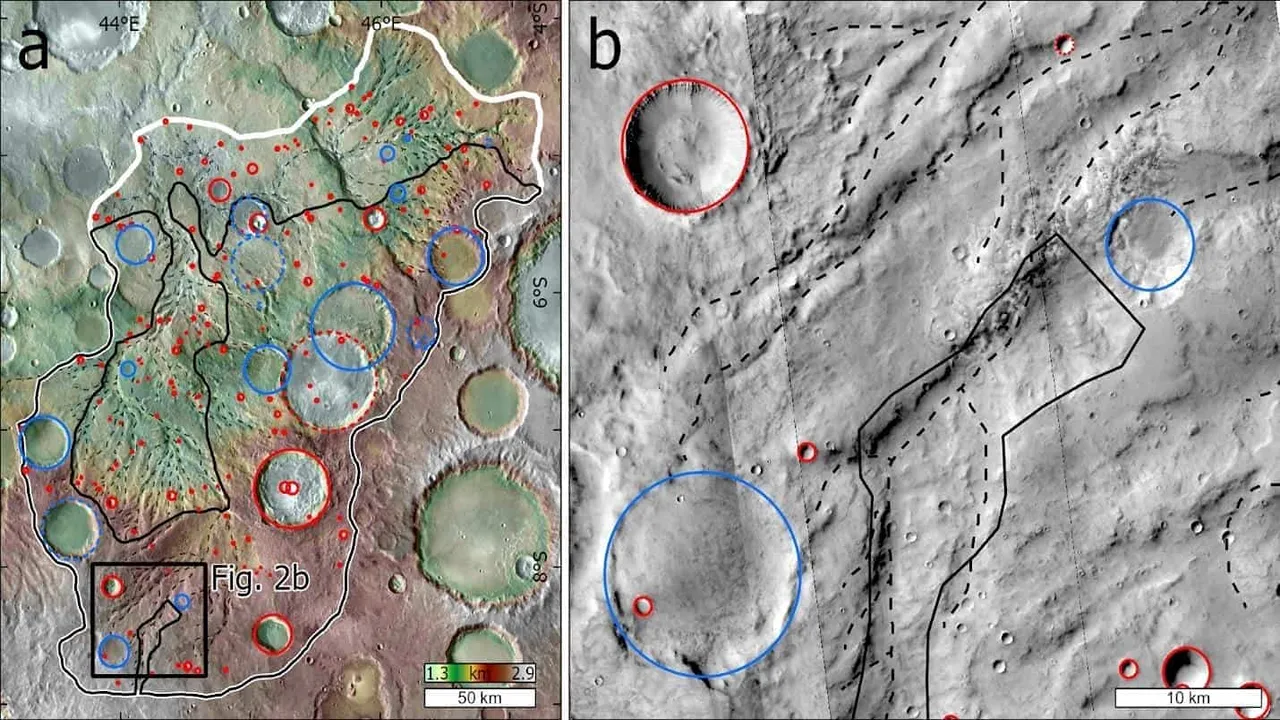Introduction: AI Peeks Beneath the Red Planet's Surface
Mars, our enigmatic red neighbor, continues to offer surprises, and artificial intelligence is increasingly helping scientists unravel its mysteries. One of the most intriguing phenomena on the Martian surface for a long time has been the "Recurring Slope Lineae" (RSL) – seasonally appearing and disappearing dark streaks on the slopes of craters and valleys. For a long time, their nature was associated with flows of liquid salty water. However, as has become known from recent scientific discussions and data analysis, AI's Martian geology insights|the latest research using AI offers an alternative, and possibly more accurate, explanation for this phenomenon, once again changing our understanding of Mars's current geological activity and potential habitability.
The Water Hypothesis Challenged
The hypothesis that RSLs are the result of seasonal seepage or flows of liquid water was extremely attractive because it hinted at the existence of accessible water on present-day Mars – a key ingredient for life as we know it. Observations showed that the streaks appear in warmer seasons and disappear in colder ones, indirectly pointing to processes related to changes in the state of water. However, detailed spectral analyses and conditions on the Martian surface (extremely low temperatures and pressure) always left room for doubt and the search for alternative explanations.
Artificial Intelligence Enters the Game: A New Way to Analyze Data
This is precisely where advanced artificial intelligence methods came to the rescue. Scientists used AI to analyze vast arrays of data obtained from Martian orbiters: high-detail surface images, topographical maps, and data on temperature and atmospheric composition. Machine learning algorithms, particularly deep neural networks, were trained to recognize patterns and correlations in this data that might have eluded the human eye or traditional statistical analysis methods. AI's Martian geology insights|AI modeling was also used to test various hypotheses about RSL formation mechanisms, running thousands of simulations with different parameters.
New Findings: Dry Flows or Other Mechanisms?
The results of recent AI analysis, actively discussed in the scientific community, indicate that many (if not all) RSLs may be formed by dry, granular flows – a kind of mini-avalanche of sand and dust. Artificial intelligence helped identify subtle morphological features of these streaks characteristic of the movement of loose materials, rather than liquid flows. Other mechanisms unrelated to liquid water are also being considered, such as seasonal changes caused by the sublimation of carbon dioxide frost. AI was able to more accurately correlate the appearance and disappearance times of the streaks with seasonal insolation cycles and temperature regimes, which are not always conducive to the existence of liquid water, even as brines.
Significance for Understanding Mars and Future Missions
If the conclusions obtained with AI are definitively confirmed, it will have serious implications for our understanding of modern Mars. The absence of significant liquid water flows on the surface today reduces the likelihood of finding modern life in these regions, although it does not exclude its existence in subsurface reservoirs. On the other hand, this knowledge is critically important for planning future crewed and robotic missions, especially in the context of resource prospecting and landing site selection. Understanding active geological processes also helps to better reconstruct the Red Planet's climatic history.
The Future of AI in Space Exploration
This example with Martian streaks is just one of many illustrations of the growing role of artificial intelligence in space exploration. From analyzing data from telescopes and searching for exoplanets to navigating rovers and optimizing onboard systems – AI is becoming an indispensable tool for scientists and engineers. AI's Martian geology insights|AI's ability to process vast amounts of information and identify hidden patterns is opening a new era in our quest to understand the Universe.
Conclusion: AI as Humanity's New "Eye" in Space
Solving the mystery of Martian RSLs with the help of AI underscores the transformative power of this technology for fundamental science. Artificial intelligence not only accelerates research but also allows us to ask new questions and find answers where it was previously impossible, becoming a kind of extension of human intelligence in the exploration of distant worlds.
